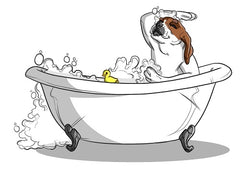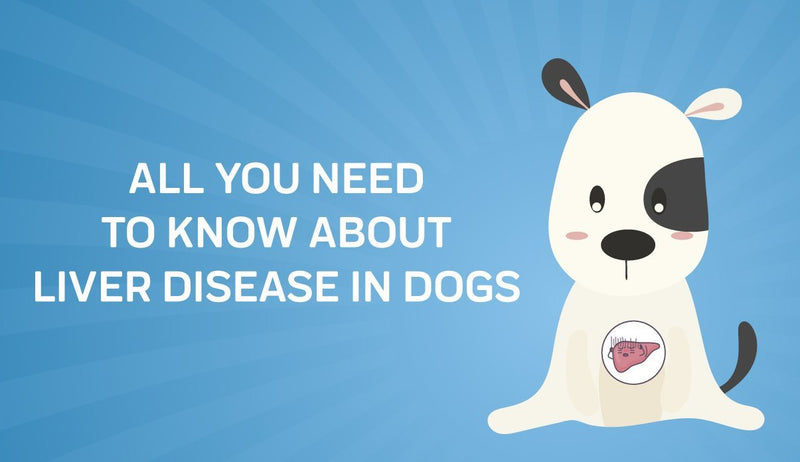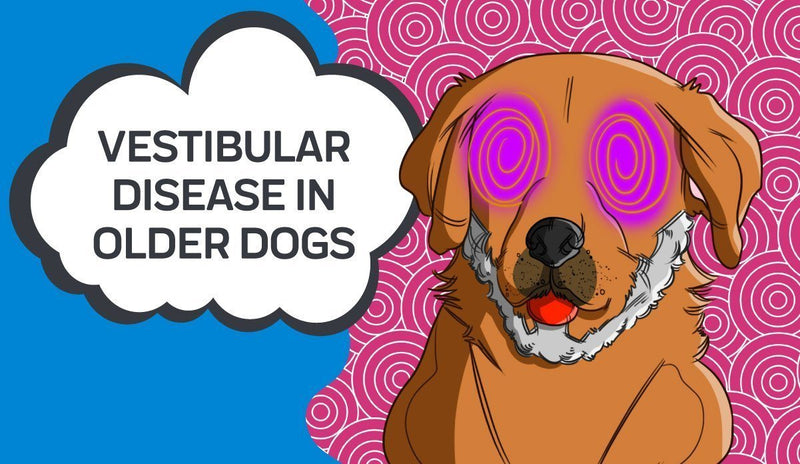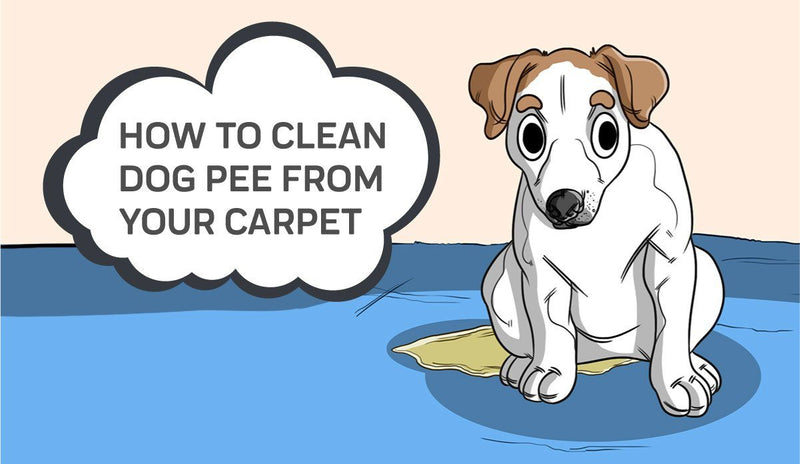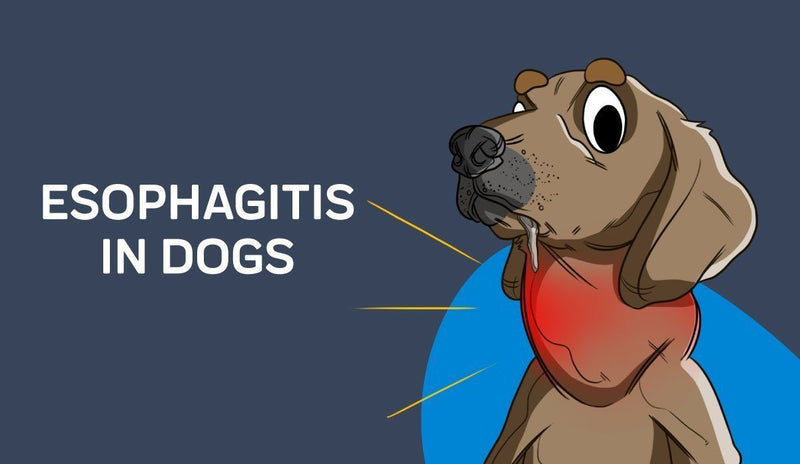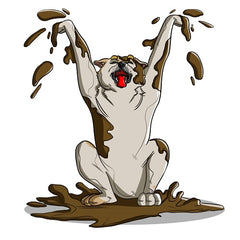
Are you thinking, “Why does my dog roll around in poop?” While this behavior might be normal for dogs, the majority of owners might find it disgusting. Shockingly, a pup rolling in poop actually can be pointing to a variety of different causes. Once you’re aware of the variety of reasons, it is possible to then find an option for managing this problem.
Below is a guide from Innovet Pet Products on why your dog rolling in poop and how to stop a dog from rolling around in poop.
My dog rolls in poop, why?
Why does my dog roll in poop? As a human, it may seem very unusual that a canine willingly covers himself in dung. What’s considered regular behavior for a human might be completely different for a canine and vice versa. While canines are notorious for having some odd behaviors, such as urinating inside the house or chewing up your underwear, there’s always a reason for the behavior. When it comes to the dog rolling around in his own excrement, there are a multitude of potential theories that might be the underlying culprit.
Below we list a few of the most typical causes:
Theories of Why Do Dogs Roll Around in Poop: To Conceal His Own Scent
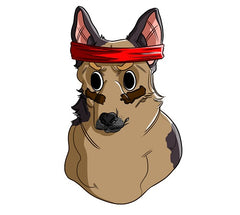
So, why is my dog rolling in poop? Maybe the most typical theory is that they’re attempting to conceal their scent. They’re descendants of wild animals which couldn’t rely on regular meals and a safe environment; instead, dogs were left to wander out inside the wilderness pursuing their next meal. Rolling in waste assists in masking the pup’s scent, which is an instinct which developed over a period of time as a method of hunting prey without being detected. In addition, it worked in their favor, too, when they were attempting to avoid bigger predators from hunting them. Even though today’s pups live completely different lives than their ancestry, some of those instincts linger deeply ingrained in domesticated canines, which includes the capability and desire to hunt. When the dog rolled in poop, it might just be his way of attempting to conceal his own scent.
Mark His Territory and Leave a Scent Behind
While a pup rolling in poop may be an indication that your dog is attempting to conceal his scent, it also can be an attempt to leave the scent behind. You probably have heard of a pooch marking his territory by lifting a leg and peeing on a surface; however, there are several different ways by which they leave their unique scent behind. When the dog rolls in his excrement, he might be doing it to show other dogs that the territory is his. In leaving behind his scent, the dog might be letting other animals and dogs know not to come into his space. This procedure of marking territory may serve as a warning system to other dogs and is an aspect of their evolutionary history as a method of communicating with other dogs in the surrounding area.
What to Do If Your Pet is Marking inside the House
How do I stop my dog from rolling in poop? Once you’re through with the puppy stage and the dog is fully housebroken, you’ll let your guard completely down and no longer expect these “accidents” to happen. All of a sudden, you see your pet peeing, or marking, in your home despite the training! It may be a frustrating situation as an otherwise trained pup seemingly forgets what he was taught. But there are a variety of reasons your pup might be marking inside your home. This post is going to go over those possibilities and offer a variety of ideas to stop this undesired behavior.
Marking: What is it?
Urinating, or marking, on various surfaces and objects, is a dog’s way of communicating with other pets, most likely other canines. The dog might be communicating a variety of things, yet it never is an act of anger or jealousy despite how you might feel at the moment. It’s different from full urination as isn’t a complete bladder release. Rather, marking usually is little spurts – just enough to leave behind a scent. Plus, while both female and male dogs are able to mark, it’s most often a behavior seen exhibited by male dogs.
Why is Your Dog Marking and How To Stop Your Dog From Rolling In Poop
So, you have eliminated anger or jealousy as possibilities for the dog’s behavior, yet what might be causing the dog to mark inside your house? There are a variety of reasons a dog is exhibiting this behavior, each with its own unique solution.
A Lingering Odor
If you’ve ever had another dog or puppy, there might be a lingering odor in your home. Your new pup will pick up on this and sense a need to mark his territory over the previous canine, even if he is no longer living there. It’s a likely reason if you foster canines or have brought a second pup into your house. Therefore, if you observe that the dog is marking in one or two specific spots, go back and do a deep clean in those spaces. If the marking proceeds over these same areas, you might give some consideration to replacing the affected furniture or carpet.
A Medical Problem
This is particularly a possibility for canines who might be exhibiting other symptoms, too. If the dog has a urinary tract or bladder infection, he might not be able to expell all his urine while outdoors or have decreased bladder control in general. Any time the dog demonstrates a change in his normal behavior, a visit to a vet is a good idea in order to rule out medical problems.
Anxiety
If you recently have presented a new pet or person into the household environment of your pet, or he’s the new dog, he might be marking as a reaction to his dog insecurity or anxiety about the new circumstances. If that’s the case, he’ll reduce his marking behavior as he becomes more at ease with the changes in the environment and adjusts. Until that point, try and keep a close eye on the dog and distract him if the marking behavior is observed. Do not frighten him, yet a simple “hey” ought to be sufficient to get him to stop. However, if he seems to be particularly anxious, it is possible to speak with a vet about attempting a thunder short or calming supplement that eases the anxiety.
Not Completely House Broken: What you can Do If Your Pey Is Marking in your Home
If the dog is completely releasing his bladder, he isn’t house trained. Perhaps you trusted him too quickly and the training never was complete or he’s reverting to his old patterns. Some other indications that the dog isn’t house trained include going in your home when you are not there or going to the bathroom in another room in which you cannot see him. If that’s the case, return to when he was a little puppy and begin to take him out consistently. Praise him for using the bathroom outdoors and keep a close eye on him while inside the house to assist in preventing accidents.
While marking can be an irritating behavior, it’s possible to work with the dog to get past it. Besides the above, neutering the dog will decrease marking behavior as he’ll be less susceptible to feeling a need to mark the territory.
Communicate With the “Pack”
One other potential reason for this odd behavior includes to communicate with the remainder of the pack. Depending upon the environment where the dog lives, you might be a part of the pack, additional dogs in your home may, or maybe even the canines of close friends. No matter who the dog considers a member of the pack, he might feel an instinctive need that he must communicate with them. Some studies suggest that wolves demonstrate likewise behaviors. In dog rolling down hill in a smelly substance, they’re actually drawing the pack back to where the smell originated. It may be advantageous for hunting to track the path of where their prey was and keep track of it for a successful hunt. It is important to keep in mind what the dog ancestors needed to do to survive when the dog exhibits a behavior which might make little sense on the surface.
To Handle Being Bored
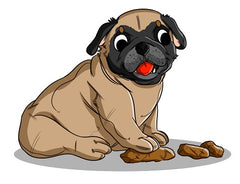
The last theory on why some pups may roll around in dung is because they’re just bored. Canines are active creatures and when they are not being stimulated properly, they go searching for their own entertainment. Like when kids are bored and, as a result, they act out, dogs also can channel their pent-up energy and frustration into unusual behaviors. If you are worried the dog might be acting out because he’s bored, assess how much exercise the dog has been getting, whether he’s getting sufficient mental stimulation, and whether there’ve been any environmental changes in his life.
Now you know some of the possible reasons why a dog might be rolling in his own waste, and you might be asking yourself, “What can I do now?” Below we list some useful ideas about how to get the dog to stop this undesired behavior.
What You Can Do When the Dog Rolls Around in Poop
It is done, the dog has rolled around in poop and despite all of your best efforts is currently a smelly dog in need of a complete cleaning. This scenario may feel overwhelming as a dog owner and you might feel at a loss for what you should do next. Here, we get into some steps you can take once you have found that your pet has been rolling in poop.
My Dog Rolled in Poop How to Clean: Give the Dog a Complete Cleaning
If the dog is covered himself in excrement, the first thing you’ll want to do is to offer him a good wash. While your dog might be perfectly content to be covered in dung, odds are that you aren’t too happy and want to correct the problem ASAP. Before you begin to get prepared to wash the dog, get some rubber gloves so that it’s possible to remain clean as you scrub on his fur. Once you have the gloves on, get a bottle of canine sensitive shampoo and get started. To fight the smell of the poop, it also can be useful to add lemon or orange peels to the water if you’re giving him a bath.
It is essential that you rinse all the poop off his fur before you begin to apply and lather his shampoo so that you don’t accidentally trap the dung in his fur. First, focus instead on removing all remnants then give him a complete rinse. Once the waste has all been rinsed off and his dog fur is saturated, rub the shampoo in then lather it up until his dog fur is coated with bubbles. Once the fur is soaked in shampoo and has adequately been scrubbed, permit the shampoo to soak in for a minimum of 10 minutes before you rinse away. The water ought to run clear and be bubble-free when all the shampoo is gone. Once the fur is shampoo-free, he’s prepared to be dried. It always is better to permit the dog to shake a couple of times if he is willing before you try and dry him yourself. Once he has given himself a complete shake, it’s possible to use a blow dryer or towel dry to complete the bath. By this point, he ought to be smelling great and have no traces of waste remaining.
How to Stop Dog from Rolling in Poop: Work to Address the Behavior
While the pup might be rolling in dung for a variety of reasons, it is vital to teach him that this isn’t an acceptable behavior. Stopping the dog from rolling around in poop may be a tough activity for numerous reasons. Most dogs just roll in poop when they’re off leash or walking around the lawn, which may make it difficult to stop at the time, even if you’re standing by. Additionally, the dog might look like he’s simply rolling around in the dirt or grass and you only may find later that he was rolling in poop. Therefore, how will you begin correcting his behavior?
Learn the Signs
Step one is to pay close attention and determine which signs the dog is exhibiting immediately before he rolls around in poop. Those signs are going to tell you what he’s about to do and permit you to intervene before he begins the nasty behavior. Those signs often will be subtle body movements; therefore, it might take a couple of tries to pin down which actions the dog takes before doing the dirty deed.
Teach Commands
Just like teaching the dog to stay or sit, it’s possible to teach the dog a command to signal him to cease in doing whatever he’s doing. For most pet owners, “leave it” is the perfect command to use since it’s very helpful in several situations. When you notice the dog is about to roll around in poop, call the command out. It’ll take repetition and training to be effective; therefore, be ready with snacks and a lot of praise when the dog successfully heeds. With a bit of effort, as well as patience, your pet will have the ability to avoid the perils of dung forever.
Eww, Not That!
It is unpleasant and gross, yet dogs’ complex relationship with their own bathroom habits is not confined to wearing it. Occasionally a watchful pet owner will catch their pet in the act – eating or trying to eat their own waste. This may be both puzzling and troubling for a pet owner who goes out of their way to provide their dog wholesome, delicious treats and food: why would they prefer to eat that to their store-bought goods?
When their body digests food, it’ll excrete a clean package of everything which was indigestible, which in a dog’s case may mean lots of protein. Their natural body processes are extremely intelligent ones; therefore, if they are missing a nutrient that they know they recently ingested, they are driven by instinct to search for their own waste to try to ingest any that remains. Admittedly, this nauseating trick also is why dog owners with both cats and dogs discover themselves consistently shooing their pet away from a cat’s litter box – feline feces is virtually pure protein, and it isn’t any coincidence that the majority of commercial dog foods are rich in protein.
If you see your dog attempting to consume his own poop or that of an additional animal, it might be a sign for a need to change his diet. Talk to your veterinarian about the pet’s nutritional needs and supplement his wet food or kibble with ingredients such as boiled chicken or brown rice to offer them the protein they are looking for from a better source.
Sources:
How to Stop Your Dog from Rolling in PoopWhy Dogs Roll in Poop and Other Stinky Things
Why Does My Dog Roll in Poop?
How to Train Your Dog to Not Roll in Poop
Why Do Dogs Roll in Smelly Stuff?
Why Do Dogs Roll in Stinky Things?!











